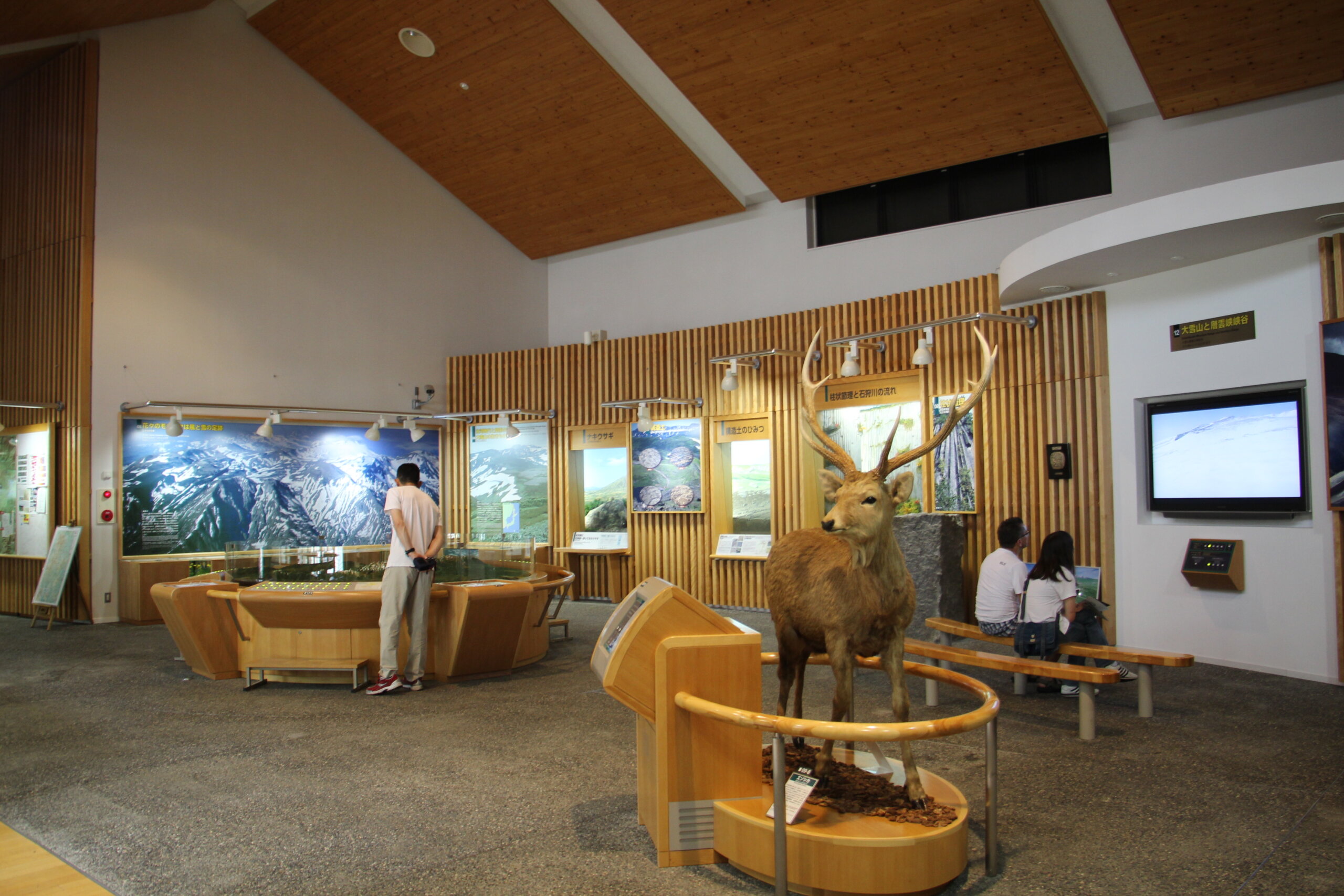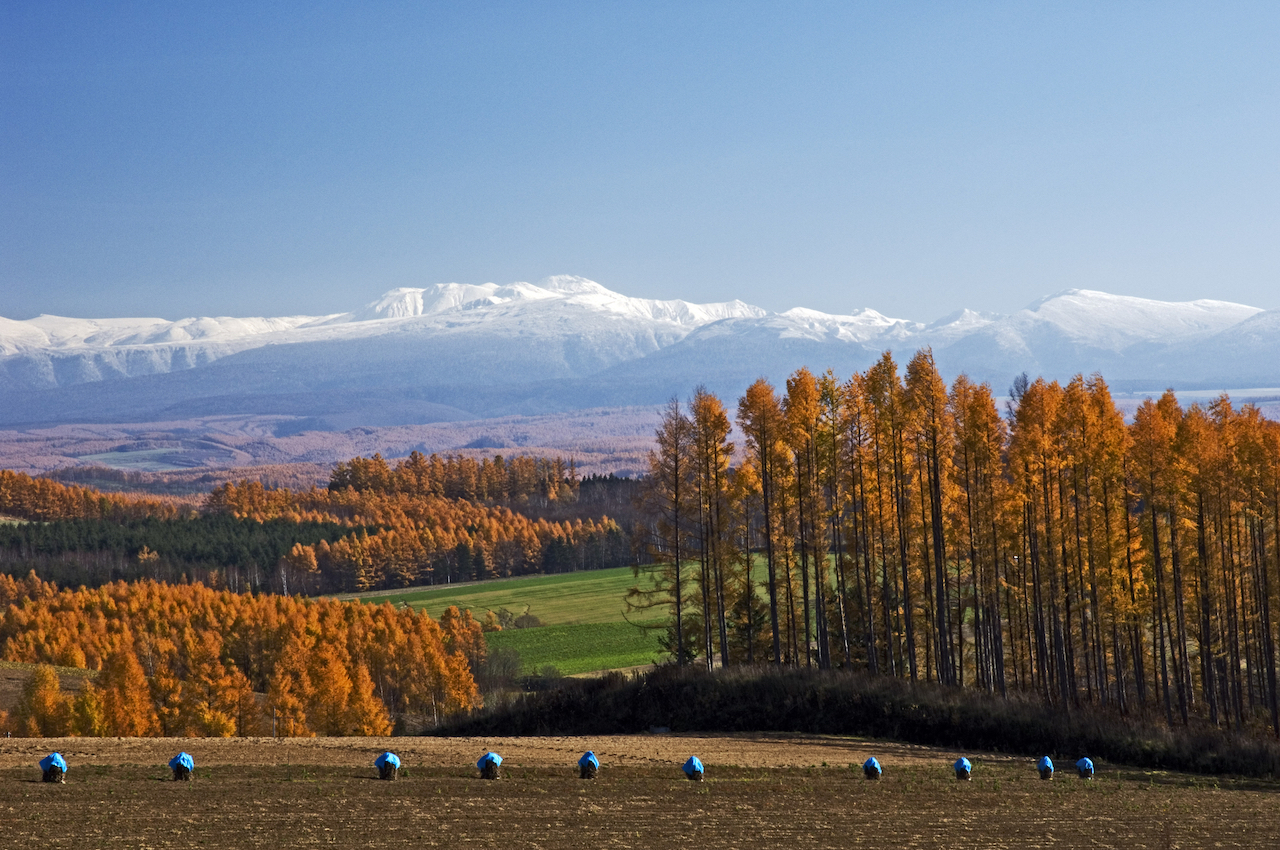
Daisetsuzan National Park is Japan’s largest national park and home to Mt. Asahidake. These beautiful majestic mountains are also the natural habitat of a wide range of rare alpine plants which flourish during the short summer season, as well as a number of wild animals such as the Northern Pika, a living fossil from the glacial age.
If you are into hiking (even just a little), the Daisetsuzan Mountain Range is the spot for you. Known as the “playground of the gods” in the language of Hokkaido’s Native Ainu, it is made up of Mount Asahi (the tallest mountain in Hokkaido), Mount Tomuraushi, Mount Tokachi, and Mount Kuro and is a designated national park. The massive mountain range reaches throughout central Hokkaido, with its area being about as big as the country of Luxembourg. Due to its high latitude, the natural environment of Daisetsuzan can be compared to a mountain of about 3000 meters above sea level on Japan’s main island, making it a habitat for a variety of unique flora and fauna. Hiking season is between July and August and in this article, we will guide to you the best spots to tackle these mountains – making sure you will find something up your alley whether you are a seasoned mountaineer or count climbing the local hill among your greatest hiking accomplishments. Just make sure to choose a route that fits your skill level and bring appropriate equipment – if you are uneasy about anything, we can also recommend hiring a local guide.

Mount Tomuraushi
Standing at 2,141 meters above sea level, Mount Tomuraushi is located centrally within the Daisetsuzan National Park. The peak is considered off the beaten track for the average climber, in part due to its difficulty. Spending a few nights on the trail while traversing the ridge is how most choose to tackle this mountain, though there is a day trip available starting at the trailhead of the so-called “Tomuraushi Tanshuku Course”. However, only attempt this if you are confident in your stamina. You can be sure to find a large variety of rarely seen plants and animals while on the climb: in the area nicknamed the “Japanese Garden”, there is an abundance of rare alpine plants. On the other hand, the rocky stretch of the trek – aptly named “Rock Garden” – features Hokkaido’s very own Ezonaki Rabbits roaming freely. That being said, nothing this mountain has to offer beats the view from the top. The sea of clouds that awaits will transport you to a different world – and make you forget all about any difficulties you might have faced on the climb up.
Shirogane, Biei, Kamikawa-gun, Hokkaido
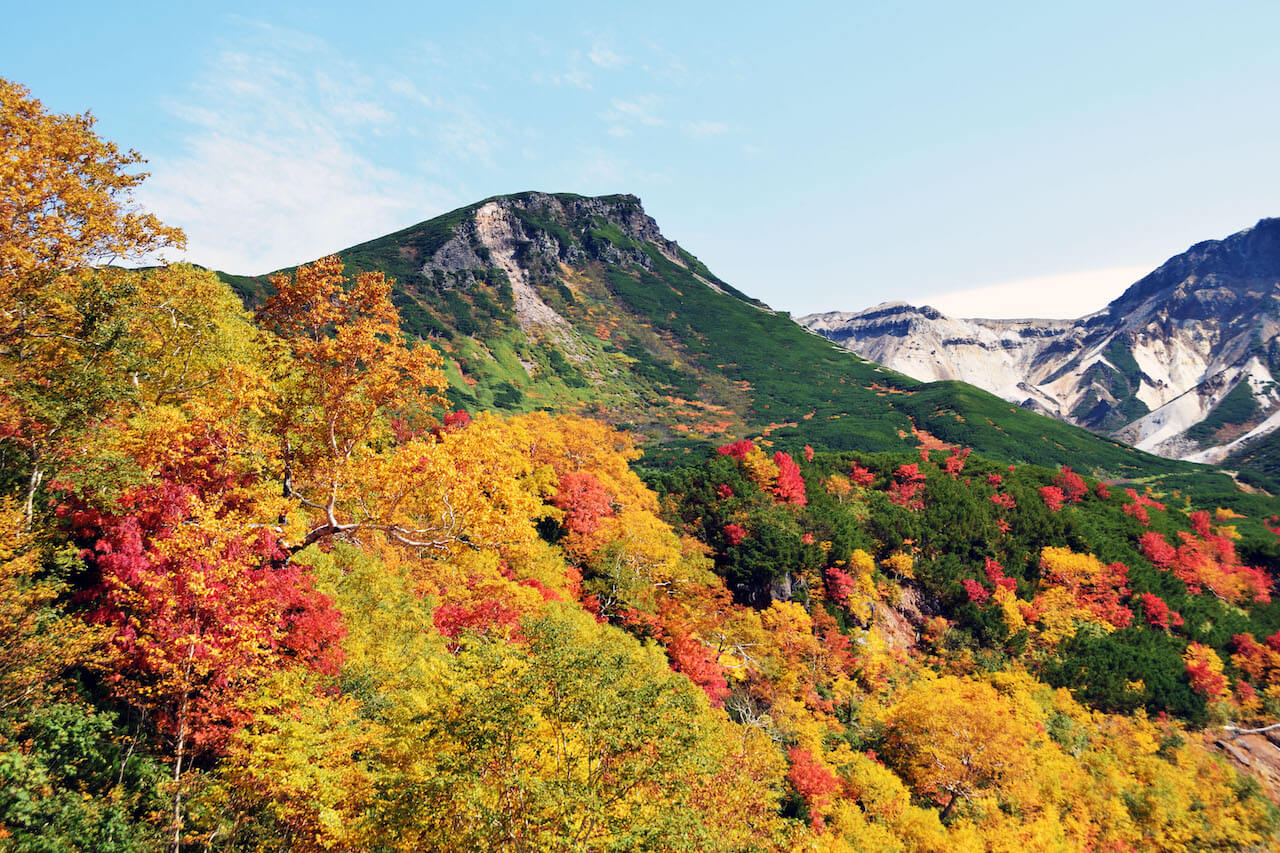
Mount Tokachi
Mount Tokachi stands at 2,077 meters above sea level and is considered an active volcano. True to this status, it is popular for the rising smoke that you can see during the climb, which is considered of high difficulty and therefore suited for experienced climbers only. There are various hot spring facilities at the foot of the mountain, including Fukiage Onsen and Tokachidake Onsen. These make a great base for your hike, as there is nothing better than relaxing in a true volcanic hot spring after a climb. The hiking season lasts from the middle of June to early September, when the changing color of the leaves makes the climb a rapid-fire spectacle of different shades of green, yellow, and red.
Shirogane, Biei, Kamikawa-gun, Hokkaido

Mt. Kurodake
Though Mount Kuroke stands tall at 1,984 meters above sea level, it is possible to go up to the mountain’s 7th Station (at 1,520 meters) by ropeway, making the climb much more manageable. From the station, it takes about 60-90 minutes to the top, and another hour or so for the descent. Therefore, we can heartily recommend Mount Kuroke even if you are a beginner or have kids in tow. Bonus: if you wake up early for the climb, there is a good chance you will get to see a sea of cloud form at the top. Finally, there are several hot spring facilities around the ropeway station – perfect for a quick dip after finishing the hike.
Sounkyo, Kamikawa, Kamikawa-gun, Hokkaido
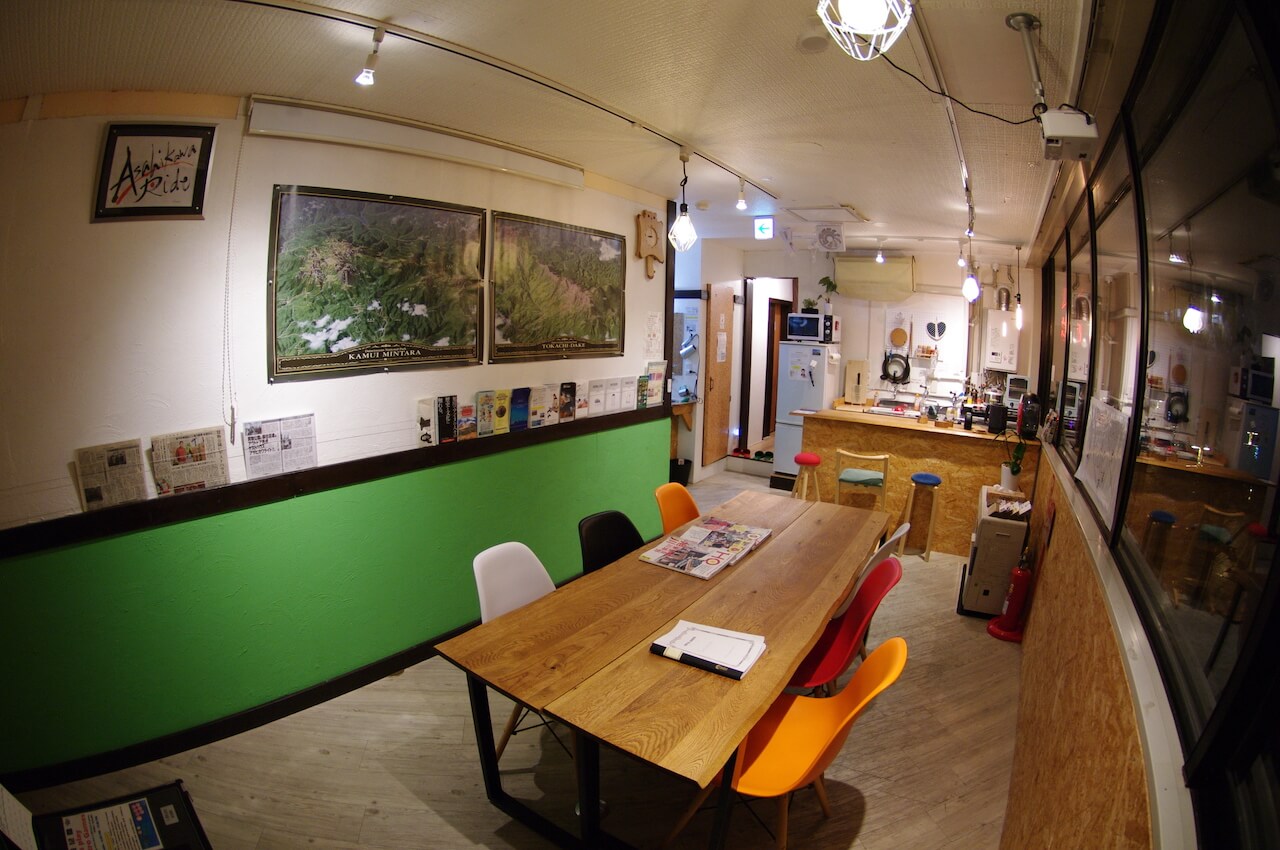
Guest House Asahikawa Ride
Guest House Asahikawa Ride is the perfect place for avid skiers, bikers, and climbers to crash whilst staying in the city due to its reasonable price and a large assortment of related goods available for rental. Especially the latter makes traveling from abroad that much easier, taking away the need to lug large amounts of gear across continents. Furthermore, there is even an in-house workbench and tools to make last-minute adjustments to your bike or skis. The atmosphere here is open and lively, meaning there is a good chance you will meet like-minded people from both Japan and around the world.
7 Chome-31-10 6 Jodori, Asahikawa, Hokkaido
https://www.asahikawaride.com/
Sounkyo Visitor Center
When the weather doesn’t permit hiking, or when you simply want some information about nearby mountains, drop by a visitor center! At Daisetsuzan National Park, there are a total of four of these, with the Sounkyo Visitor Center standing out for featuring a detailed model of the mountain range, with the staff being more than willing to explain the geographical nuances of the area – as well as provide background about that unique plant you saw on your last hike. You can also rent a tablet (free of charge!) with information about the mountain range, with language support including English, Chinese (Simplified and Traditional), Korean, and Thai.
Sounkyo, Kamikawa, Kamikawa-gun, Hokkaido
http://sounkyovc.net/
June to October: 8 a.m. to 5:30 p.m.
November to May: 9 a.m. to 5 p.m. (Closed on Monday)
*Information may be changed. For more details, please refer to the official website.
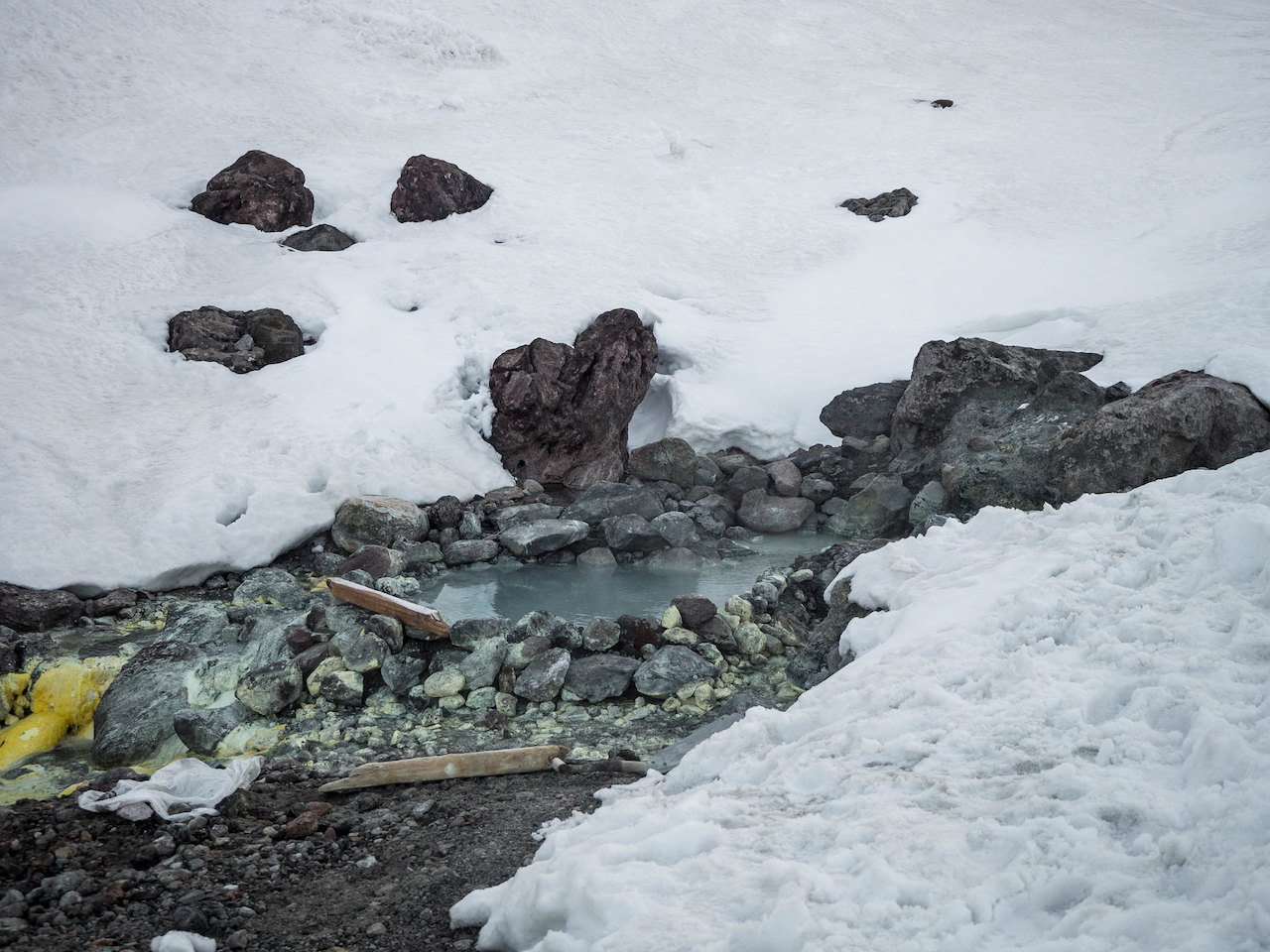
Nakadake Hot Spring
To enjoy the mountains like a local, you definitely need to pair the hike with a visit to a “Yato” or “Noyu”, which refers to hot springs that are “out in the wild” – not part of a hotel or similar facility. Generally, the outdoor setting means gender-mixed bathing, though the patrons will sometimes come to an agreement to take turns spontaneously on-site. As is customary for bathing throughout Japan, you can enter the bath completely naked (though this is not a must). The Nakadake Hot Spring itself is located about 2 hours from the Asahidake Ropeway’s Sugatami Station, luring hikers that have climbed Mount Asahi. There are even shovels on hand, meaning you can adjust water levels to your liking, adding a fun DIY aspect to this unique bathing experience.
Yukomanbetsu, Higashikawa, Kamikawa-gun, Hokkaido

Sugatami Lake
If you don’t have the time or stamina for a longer climb but still want a mountain experience, come to Sugatami Lake. Located at about 1,600 meters above sea level on Mount Asahi’s mountainside, this scenic lake was formed from water accumulating in a volcanic crater. It can be reached from the Asahidake Ropeway’s Sugatami Station, taking about 20 to 30 minutes. The lake’s relatively easy access and beautiful reflective properties (which make for a great picture!) explain this spot’s popularity.
Nokanan, Higashikawa, Kamikawa-gun, Hokkaido

